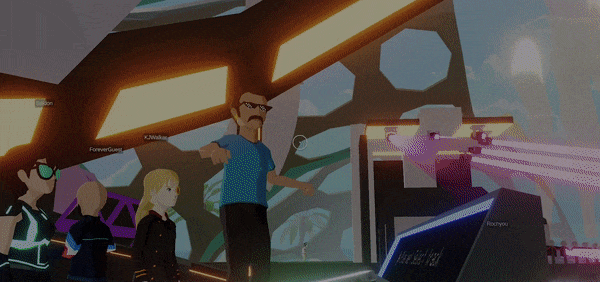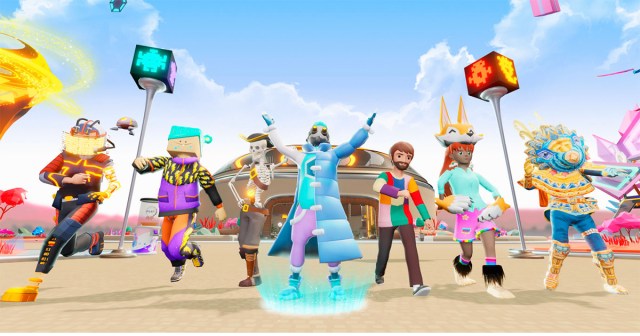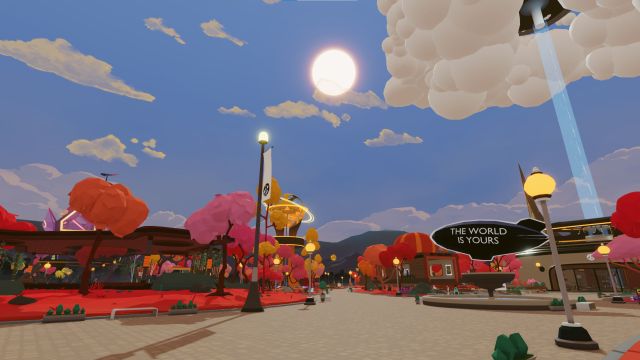
READ MORE: It’s the most complete Metaverse at the moment, and there are five opportunities to earn it (Nico Nobili)
Curious about why anyone would buy real estate in a 3D world and how they can make money from it? Here are your answers, filtered through the example of one leading virtual world: Decentraland, which is a good proxy for other metaverse economies.
Decentraland was created by Argentinians Ari Meilich and Esteban Ordano and has been in development since 2015 and is run as a non-profit by the Decentraland Foundation. It launched in 2017 but took off in 2020 when the metaverse craze began.
Decentraland is powered by the Ethereum blockchain. Users can create, experiment, and monetize content and applications.

NAVIGATING THE METAVERSE:
The metaverse may be a wild frontier, but here at NAB Amplify we’ve got you covered! Hand-selected from our archives, here are some of the essential insights you’ll need to expand your knowledge base and confidently explore the new horizons ahead:
- What Is the Metaverse and Why Should You Care?
- Avatar to Web3: An A-Z Compendium of the Metaverse
- The Metaverse is Coming To Get You. Is That a Bad Thing?
- Don’t Expect the Metaverse to Happen Overnight
- A Framework for the Metaverse from Hardware to Hollywood and Everything in Between
Brands including Samsung, Atari, Miller Lite and PwC have bought digital properties on the site. In March of this year, Decentraland hosted Metaverse Fashion Week in which major fashion brands appeared, including Dolce & Gabbana, Tommy Hilfiger, and Estée Lauder. Musicians Deadmau5 and Grimes have held concerts on the platform.
“One of the coolest things about Decentraland is that it’s not just a virtual world, but a virtual economy as well,” says Nico Nobili, CEO of Sybershel, who acts as our guide. “In addition to buying and selling land, users can also buy and sell goods and services within Decentraland.”
So what are the earning opportunities?
Own Some Pixel Real-Estate
The most obvious income opportunity for landowners is to buy and then sell their land in a property speculation akin to the real world.
Each 10m x 10m square plot of LAND in Decentraland is an indivisible and permanent asset stored in a smart contract.
That means that every piece of land purchased is permanent and can’t be altered. The value of each LAND is determined by market demand.
LAND is actually a non-fungible token ERC-721 minted on the Ethereum blockchain. Non-fungible means that it is not replicable and it is unique.
In April 2021, during a surge in popularity for NFTs plots parcels sold for between $6,000 and $100,000.
“Decentraland is still in its infancy, so land and property prices are relatively low,” Nobili says. “But as the platform grows, prices are expected to rise.”

Sell Services on Your Property
In addition to buying and holding LAND, users can also develop their own applications and experiences (known as “dapps”) on their lots.
“A bit like a physical store,” says Nobili, “but in these dapps you have an experience as if you were entering a museum or a playground.”
He reports that Decentraland plans to launch a marketplace where users can buy and sell goods and services. The market will be powered by the same smart contracts that power the property system.
CRUSHING IT IN THE CREATOR ECONOMY:
The cultural impact a creator has is already surpassing that of traditional media, but there’s still a stark imbalance of power between proprietary platforms and the creators who use them. Discover what it takes to stay ahead of the game with these fresh insights hand-picked from the NAB Amplify archives:
- The Developer’s Role in Building the Creator Economy Is More Important Than You Think
- How Social Platforms Are Attempting to Co-Opt the Creator Economy
- Now There’s a Creator Economy for Enterprise
- The Creator Economy Is in Crisis. Now Let’s Fix It. | Source: Li Jin
- Is the Creator Economy Really a Democratic Utopia Realized?
Speculate with Native Currency
Another way to generate income in Decentraland is to simply hold the platform’s native currency, MANA.
MANA is an ERC-20 token, which means it can be bought and sold on cryptocurrency exchanges.
Dapps on Decentraland can only by visited by other users who own MANA.
The price of MANA is expected to rise as the platform grows and as more people use it.
Soon it may be possible for users to convert conventional dollars and sterling into MANA, a move that is thought necessary to populate Decentraland and create more demand.
Mint and Sell Tokens
Another possibility is to create a market for non-fungible tokens (NFTs) such as digital art, collectibles, and game items.
According to Nobili, Decentraland is working on a way to allow users to create their own NFT markets.
“You will then be able to sell the products you created on the Decentraland Metaverse to other avatar users who frequent this world.”
THE ABCs of NFTs:
Are NFTs just more hype, or are they actually the building blocks of the creator economy? Understanding blockchain technology can seem like a lot, but NAB Amplify has the expert knowledge and insights you need to remain at the top of the intersection of art and technology:
- NAB Amplify’s NFT Primer
- What’s the Real Future of the NFT Crypto Art Market?
- Weird Science: The Connection Between NFTs and… Human Nature?
- What Is the Value of an NFT?
- NFTs: Content Strategy or Digital Craze?
Speaking of avatars, you can also create and sell virtual clothing and other avatar accessories and earn income that way.
Once again the Decentraland team is working on a way to allow users to also create and sell their own avatar clothing.
This is all a very rosy picture of the metaverse and how everyone can be involved and make money from participation, but it strikes me that it’s also not telling the full story. It would seem that most of the money-making schemes here are like the stock market — where you buy low, bet that demand will rise and cash out on a profit. The stock market IRL is dominated by venture capital — i.e., those with existing capital can absorb the risk.
“One of the coolest things about Decentraland is that it’s not just a virtual world, but a virtual economy as well. In addition to buying and selling land, users can also buy and sell goods and services within Decentraland.”
— Nico Nobili
Like many metaverse idealists, Nobili doesn’t point out that the site is dominated by brands — that is, advertisers hoping to extend their marketing into the 3D internet. To my mind, that’s just old capitalism and it’s not creator led.
More significantly, metaverse visionaries make much of the idea that avatars and currency or assets can be exported seamlessly between multiple virtual worlds that make up the metaverse. While Decentraland is making moves to be transparent (ie enabling MANA to be traded as standard cryptocurrency), it’s not clear if NFTs minted in other worlds are able to be traded on its site.
As Nobili says, this is a work in progress: much like the metaverse.
Sybershel, by the way, is attempting to combine technology and artificial intelligence with human beings. “Creating technological products that adapt, blend, and merge with man,” Nobili states. “Making him more bionic.”


